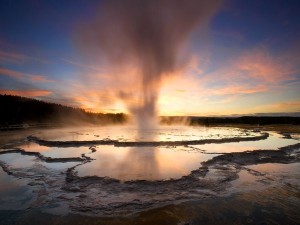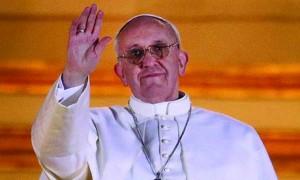As a kid, my parents bravely took me on a trip to the geysers at Yellowstone National Park. This was daring because they were taking me out on a wooden walkway, surrounded by boiling water mixed with sulfur. I remember being terrified that the wooden structure would break, and my entire family would plummet to our boiling doom. I thought it much better to remain on the dry land, away from the scary wooden walkway, where nothing bad could possibly happen.

My mother would have none of this. She had dragged two squawling toddlers across the continent, and had no intention of remaining on the boring, dry land when she could be walking six inches above a boiling geyser. As I loudly denounced her, she dragged me by my skinny wrist out to the observation platform. Every time I tried to bolt, she would bring me back, until it finally dawned on me that the wooden walkway was not in fact going to plunge us into Nature’s cauldron.
As a senior in high school, I was pulled aside by a well-meaning, but very conservative, friend. He was afraid that “those professors” with their theories would undermine my pure, simple, uncritical faith. He was afraid I would wander off the walkway of faith, and boil to death in the sulfurous world of academics. Little did he know how correct he would prove to be.
At Houghton, I have learned to doubt. I have learned to doubt simple answers, quick replies and the reduction of life to the formulaic. There are very few parts of my pre-college life that I haven’t learned to doubt. Morality? Check. Faith? Check. Political affiliation? Check. Social views? Check. Star Wars vs. Star Trek? Check. The list goes on and on, until at last I realize that I have, at some point or another throughout my college years, held every single opinion on almost every issue Out There in the world. I have waffled between the isms like a sail in a crosswind.
I also doubt whether this is a bad thing.
There must be a space for ambiguity in this world. Back on that wooden walkway in Yellowstone, I was convinced we were about to topple into the geyser. My four year old brain knew nothing about structural integrity or about the fact that wood floats on water. I didn’t know that the government sent out inspectors to make sure that no one plunged to their doom in the geyser. The entire regulatory and building structure of modern society was almost entirely unknown to me. I hadn’t learned to trust the world.
Nor would I have learned about the trustworthiness of modern carpentry if I hadn’t eventually wandered out onto that wooden walkway. The only way to learn to trust is to nearly fall into boiling water. I could hardly have known, later in life, that airport terminal arms, skyscrapers, bridges, or the infamous road climbing into the Dalmatian hillside called “The Stairway to Heaven” were reliable if I hadn’t learned to trust that walkway.
Similarly, I could hardly learn to trust modern society and its multitude of intellectual, spiritual and moral developments without going through a period of complete bewilderment and ambiguity. As human beings, we can’t learn without experiencing confusion, and we can’t love without feeling pain. Houghton’s official religion, Christianity, contains this belief at its core. God entered the particularity and confusion of human existence, and felt pain, in order that we might understand love.
Here’s to ambiguity and confusion in imitation of God. Here’s to inching out slowly, ever so slowly, onto the wooden walkway. Here’s to continuing to study and analyze and synthesize. May you never wander off the walkway, but please don’t remain back on the land looking anxious. If I try to bolt to the land, make sure I don’t succeed, and when you try to bolt I’ll drag you back to the observation deck. The confusion and the uncertainty is good, and ambiguity is actually healthy, for this is the only way to learn to love. May God protect us all from the denial of confusion, and the elimination of ambiguity.

